The Big Picture | |
- Don’t Blame PowerPoint! It’s just a vehicle
- 10 Thursday PM Reads
- What Do Big Corporations Pay in Taxes?
- Who Is Getting Richer ? Poorer? ALOT Richer?
- Trends in the Distribution of Household Income Between 1979 and 2007
- MC Moneypenney – Tap Dat A$$et (NSFW)
- 10 Thursday AM Reads
- Big Picture Conference: Now Online!
- Winter is Right Around the Corner
- The Art Of R.S.Connett
| Don’t Blame PowerPoint! It’s just a vehicle Posted: 27 Oct 2011 03:00 PM PDT | |||||||||||||||||||||||||||||||||||||||||||||||||||||||||||||||||||||||||||||||||||||||||||||||||||||||||||||||||||||
| Posted: 27 Oct 2011 02:00 PM PDT Through the miracle of Instapaper, here is my afternoon train reading:
What are you reading? | |||||||||||||||||||||||||||||||||||||||||||||||||||||||||||||||||||||||||||||||||||||||||||||||||||||||||||||||||||||
| What Do Big Corporations Pay in Taxes? Posted: 27 Oct 2011 12:00 PM PDT | |||||||||||||||||||||||||||||||||||||||||||||||||||||||||||||||||||||||||||||||||||||||||||||||||||||||||||||||||||||
| Who Is Getting Richer ? Poorer? ALOT Richer? Posted: 27 Oct 2011 09:00 AM PDT That the rich get richer and the poor get poorer. At least, that is what most people believe. That cliché is not quite accurate. The data on this subject, as detailed by the CBO and reflected in the charts below, reveals that over the past three decades, the poor got a little bit richer, the rich got a lot richer, and the most rich got phenomenally richer. That may not fit on a bumper sticker, but it is the simple fact. We learn these details from a newly released report on real (inflation-adjusted) average household income in the United States from the non-partisan Congressional Budget Office, titled Trends in the Distribution of Household Income Between 1979 and 2007. The rich got richer — almost three times as rich — over that time period:
> The very rich — the top 1% — captured the lionshare of the growth of total market income:
> And as we showed the other day (see Forget the top 1% — Look at the top 0.1% and PPT presentation), the income inequality was skewed to an even greater degree amongst that top 1% — the top 0.1% and the much wealthier 0.01% is where all the big bucks are. This matters a great deal — but not for the silly political reasons you have been led to think. No, its not about class warfare. No, its not about redistributing the wealth. The reason this matters is quite simple: Healthy societies have modest, but not extreme wealth and income inequalities. There are inequalities because not everyone has the same skills and capabilities, and some inequality in wealth and income provides an incentive system. However, massive, widely disparate economic inequality has historically led to bad — and in some cases, extremely bad — outcomes. It contributes to social unrest, excessive political populism, and mob violence. I write this as someone who, due to a fortuitous combination of luck and work, developed a skill set that is highly valued by modern society. This is in part to an accident of birth, to have an excellent education, to some serendipity. Overcoming some adversity didn’t hurt; figuring out how to turn some deficits to an advantage was hugely beneficial. Thus, I find myself in that top 1% economically; but I know deep down in my soul that if I was born 100 years earlier — and maybe even 30 years earlier — I would not have been. This makes me acutely aware of the risks and dangers of our current wide disparity of wealth and income. Healthy societies allow their citizens to have a realistic chance at fulfilling their potential. This is done through a combination of economic freedom, enforcement of laws and contracts, legitimate democratic elections, basic education for its citizens, tax fairness, regulatory oversight of influential corporations an other entities, and the institutional value of protecting individual liberty. Where is the United States falling short? ~~~ Summary of CBO paper after the jump; full paper here. ~~~~~~~~~~~~~~~~~ Increased Concentration of Market Income The major reason for the growing unevenness in the distribution of after-tax income was an increase in the concentration of market income (income measured before government transfers and taxes) in favor of higher income households; that is, such households' share of market income was greater in 2007 than in 1979. Specifically, over that period, the highest income quintile's share of market income increased from 50 percent to 60 percent (see Summary Figure 2). The share of market income for every other quintile declined. (Each quintile contains one-fifth of the population, ranked by adjusted household income.) In fact, the distribution of market income became more unequal almost continuously between 1979 and 2007 except during the recessions in 1990–1991 and 2001. Two factors accounted for the changing distribution of market income. One was an increase in the concentration of each source of market income, which consists of labor income (such as cash wages and salaries and employer paid health insurance premiums), business income, capital gains, capital income, and other income. All of those sources of market income were less evenly distributed in 2007 than they were in 1979. The other factor leading to an increased concentration of market income was a shift in the composition of that income. Labor income has been more evenly distributed than capital and business income, and both capital income and business income have been more evenly distributed than capital gains. Between 1979 and 2007, the share of income coming from capital gains and business income increased, while the share coming from labor income and capital income decreased. Those two factors were responsible in varying degrees for the increase in income concentration over different portions of the 1979–2007 period. In the early years of the period, market income concentration increased almost exclusively as a result of an increasing concentration of separate income sources. The increased concentration of labor income alone accounted for more than 90 percent of the increase in the concentration of market income in those years. In the middle years of the period, an increase in the concentration within each income source accounted for about one-half of the overall increase in market income concentration; a shift to more concentrated sources explains the other half. In the later years, an increase in the share of total income from more highly concentrated sources, in this case capital gains, accounted for about four-fifths of the total increase in concentration. Over the 1979–2007 period as a whole, an increasing concentration of each source of market income was the more significant factor, accounting for four-fifths of the increase in market income concentration. Income at the Very Top of the Distribution The rapid growth in average real household market income for the 1 percent of the population with the highest income was a major factor contributing to the growing inequality in the distribution of household income between 1979 and 2007. Average real household market income for the highest income group nearly tripled over that period, whereas market income increased by about 19 percent for a household at the midpoint of the income distribution. As a result of that uneven growth, the share of total market income received by the top 1 percent of the population more than doubled between 1979 and 2007, growing from about 10 percent to more than 20 percent. Without that growth at the top of the distribution, income inequality still would have increased, but not by nearly as much. The precise reasons for the rapid growth in income at the top are not well understood, though researchers have offered several potential rationales, including technical innovations that have changed the labor market for superstars (such as actors, athletes, and musicians), changes in the governance and structure of executive compensation, increases in firms' size and complexity, and the increasing scale of financial-sector activities. Increased Concentration of After-Tax Income As a result of those changes, the share of household income after transfers and federal taxes going to the highest income quintile grew from 43 percent in 1979 to 53 percent in 2007 (see Summary Figure 3). The share of after-tax household income for the 1 percent of the population with the highest income more than doubled, climbing from nearly 8 percent in 1979 to 17 percent in 2007. The population in the lowest income quintile received about 7 percent of after-tax income in 1979; by 2007, their share of after-tax income had fallen to about 5 percent. The middle three income quintiles all saw their shares of after-tax income decline by 2 to 3 percentage points between 1979 and 2007.
~~~ Source: Hat tip Neatorama, October 26, 2011 | |||||||||||||||||||||||||||||||||||||||||||||||||||||||||||||||||||||||||||||||||||||||||||||||||||||||||||||||||||||
| Trends in the Distribution of Household Income Between 1979 and 2007 Posted: 27 Oct 2011 08:30 AM PDT | |||||||||||||||||||||||||||||||||||||||||||||||||||||||||||||||||||||||||||||||||||||||||||||||||||||||||||||||||||||
| MC Moneypenney – Tap Dat A$$et (NSFW) Posted: 27 Oct 2011 07:30 AM PDT | |||||||||||||||||||||||||||||||||||||||||||||||||||||||||||||||||||||||||||||||||||||||||||||||||||||||||||||||||||||
| Posted: 27 Oct 2011 06:45 AM PDT These are what I read, skimmed, excerpted and digested this AM:
What are you reading?
| |||||||||||||||||||||||||||||||||||||||||||||||||||||||||||||||||||||||||||||||||||||||||||||||||||||||||||||||||||||
| Big Picture Conference: Now Online! Posted: 27 Oct 2011 06:00 AM PDT By popular request, the entire conference is now available for online viewing on Fora.tv. (I will post some previews in the Video tab over the next few days). Note to the many students who inquired about discounts: We have subsidized the video recording, editing and hosting, and your cost to view the entire conference online is $39.95 (versus $895 in person). | |||||||||||||||||||||||||||||||||||||||||||||||||||||||||||||||||||||||||||||||||||||||||||||||||||||||||||||||||||||
| Winter is Right Around the Corner Posted: 27 Oct 2011 05:30 AM PDT
Investment letter – October 21, 2011 , Winter is Right Around the Corner
There has been no pick up in railroad volumes associated with the holidays either. According to Burlington Northern Santa Fe, volumes in July, August and September were flat compared to 2010. The Ceridian-UCLA Pulse of Commerce Index, which tracks real time trucking activity, fell for the third month in a row. The index dipped .2% in July, 1.4% in August, and 1% in September. This represents an annual rate of decline of more than 10%, which was only exceeded in the 2008-2009 recession. In late September, the International Air Transport Association reported freight utilization fell to 45% in July. (latest figures available) Freight utilization measures how full freight planes are, as well as the cargo space in passenger planes. This measure rose from under 40% in 2009 to over 50% in 2010. Given the weakness in all the other modes of shipping in August and September, air freight utilization has likely slipped below 45%. The transportation of goods by land, sea, and air represent the arterial system of economic activity domestically and internationally. These reports provide an unambiguous picture of a slowdown in economic activity in the United States and globally.
In 2010, the CEO's of S&P 500 companies earned an average of $11.4 million, or 228 times median household income of $49,909. In the 1960's, the average CEO's pay was less than 40 times the average worker's pay. A good chunk of their income is derived from stock options (average 21%), which become more valuable as their company's stock rises. According to the Federal Reserve, U.S. corporations held a record $1.93 trillion in cash on their balances at the end of 2010. There are many ways a corporation can invest their cash. They can invest in research to develop new products, or increase marketing to increase sales. They can also pay down debt, or increase dividends. Too often, companies choose to buy back their own stock, often paying more than their stock is subsequently worth. In the second quarter, S&P 500 companies spent $109 billion on buybacks, according to Standard & Poors. These purchases were not particularly well timed, since the S&P fell almost 15% in the third quarter. In 2007, companies used 40% of their cash flow for buybacks, which proved awful timing. But the stock options held in 2007 by corporate executives and company directors were likely boosted by the buybacks. If a CEO can't identify investments that will improve a company's fortunes for the long term, are they really worth $11.4 million? We doubt participants in the Occupy Wall Street movement know these statistics. But the inequality of income distribution is a structural issue that must be dealt with in coming years. We have no problem with a CEO being paid so much, if the Board of Directors and shareholders don't object. Raising taxes on these CEO's won't even bring in much tax revenue, but it will be a symbol for all those who are going through a financially difficult time. In 2010, the CEO's of S&P 500 companies earned an average of $11.4 million, or 228 times median household income of $49,909. In the 1960's, the average CEO's pay was less than 40 times the average worker's pay. A good chunk of their income is derived from stock options (average 21%), which become more valuable as their company's stock rises. According to the Federal Reserve, U.S. corporations held a record $1.93 trillion in cash on their balances at the end of 2010. There are many ways a corporation can invest their cash. They can invest in research to develop new products, or increase marketing to increase sales. They can also pay down debt, or increase dividends. Too often, companies choose to buy back their own stock, often paying more than their stock is subsequently worth. In the second quarter, S&P 500 companies spent $109 billion on buybacks, according to Standard & Poors. These purchases were not particularly well timed, since the S&P fell almost 15% in the third quarter. In 2007, companies used 40% of their cash flow for buybacks, which proved awful timing. But the stock options held in 2007 by corporate executives and company directors were likely boosted by the buybacks. If a CEO can't identify investments that will improve a company's fortunes for the long term, are they really worth $11.4 million? We doubt participants in the Occupy Wall Street movement know these statistics. But the inequality of income distribution is a structural issue that must be dealt with in coming years. We have no problem with a CEO being paid so much, if the Board of Directors and shareholders don't object. Raising taxes on these CEO's won't even bring in much tax revenue, but it will be a symbol for all those who are going through a financially difficult time. Europe
So, the biggest problem facing the European Union is not coming up with enough money for the EFSF. The biggest problem is weak economic growth, which is why the old debt became bad debt, and why Europe is facing a sovereign debt and banking crisis. It is also why a good portion of the new debt will eventually become bad debt too. We don't know how long it will take for investors to reach the same conclusion. But when they do, it won't be pretty. The Euro will fall below 125 at some point in 2012. China
Stocks The current rally will last as long as institutional investors believe the U.S. will not dip into recession, and that Europe is on the path to containing its sovereign debt and banking crisis. This perception will keep selling pressure muted, and probably squeeze some sideline cash into the market. While concerns about a recession in the U.S. and Europe may take a back seat for a few weeks or even months, we believe fears of a recession in the U.S. will return, and be warranted. Although the S&P may eventually approach 1300-1320 by mid December, our guess is that a dip in the S&P to 1075-1090 will occur, before the market pushes higher. Sentiment is still fairly cautious, which is supportive. If you didn't do any selling when the S&P broke below 1258 on August 2, we would suggest selling into strength if the S&P trades between 1230 and 1270. It is possible that this rally will end as quickly as it began, if Europe doesn't get it together, and worries about the U.S. economy resurface sooner rather than later. Dollar In our May letter we recommended going long the Dollar via its ETF (UUP) at $21.56, and in our July 31 Special Update, we suggested adding to the UUP position below $20.91. We think UUP will trade above $23.00 in coming months. Use a stop of $21.10. Bonds As long as the 10-year Treasury yield is below 2.45%, we view it as a warning sign of further banking problems in Europe, and economic weakness in the U.S. Since hitting a low of 1.70%, the high has been 2.27%. Gold Gold fell below $1700, which turned the intermediate trend down. A decline below the recent low at $1534.00 seems likely. It would be ironic if it developed if the E.U. announces it has a plan to address their sovereign debt and banking crisis. We would recommend buying gold if it dips to $1510.00, using $1475.00 as a stop. Macro Tides | |||||||||||||||||||||||||||||||||||||||||||||||||||||||||||||||||||||||||||||||||||||||||||||||||||||||||||||||||||||
| Posted: 27 Oct 2011 05:00 AM PDT |
| You are subscribed to email updates from The Big Picture To stop receiving these emails, you may unsubscribe now. | Email delivery powered by Google |
| Google Inc., 20 West Kinzie, Chicago IL USA 60610 | |


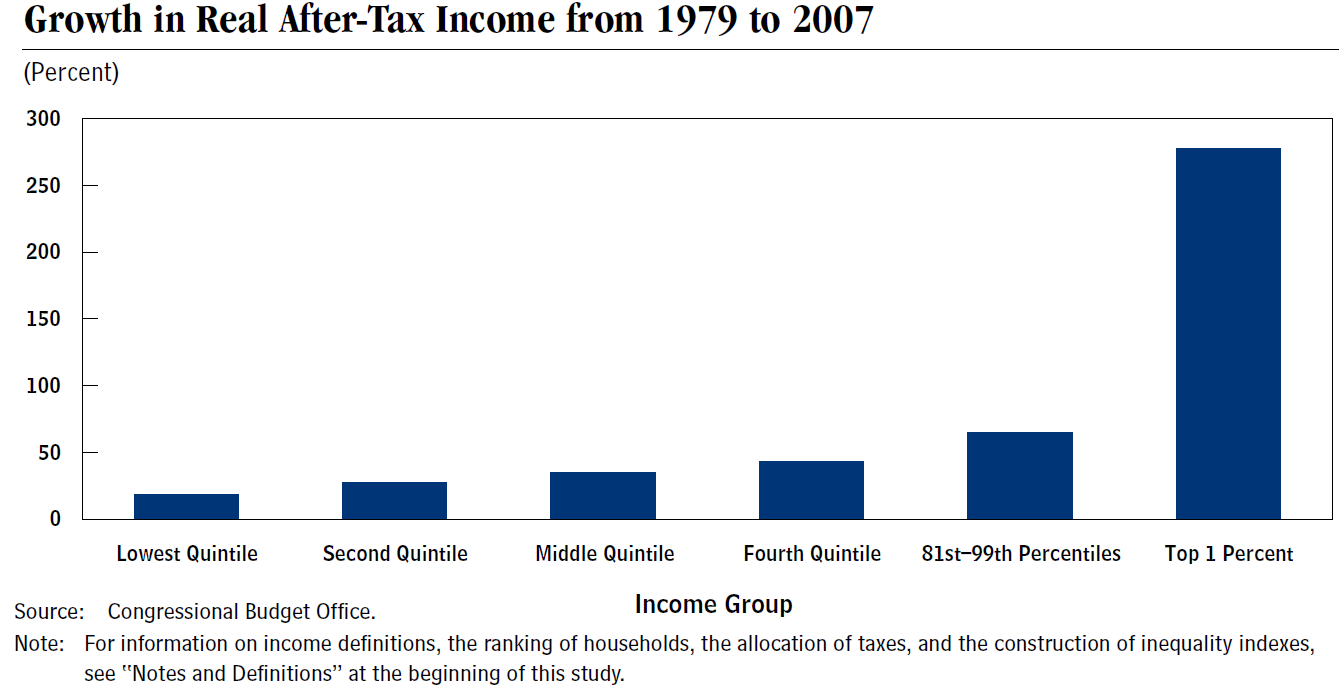
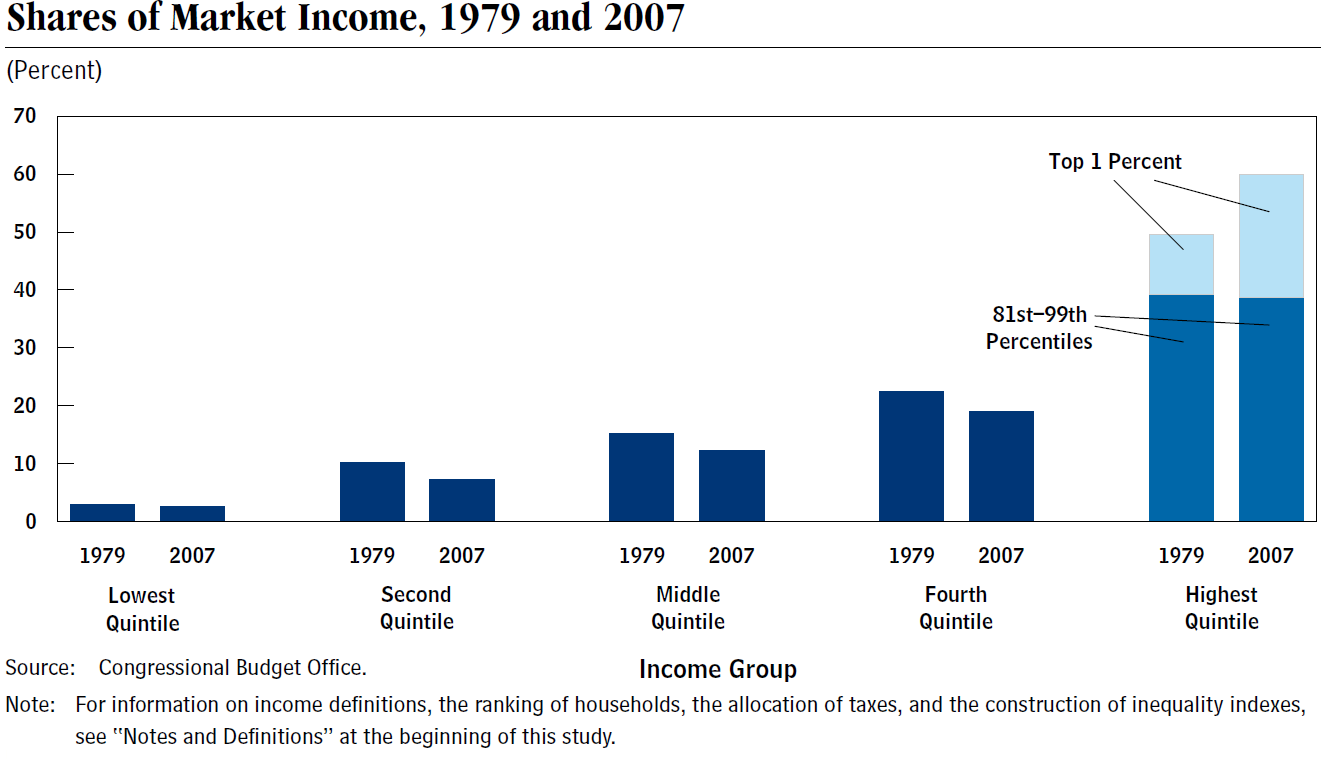
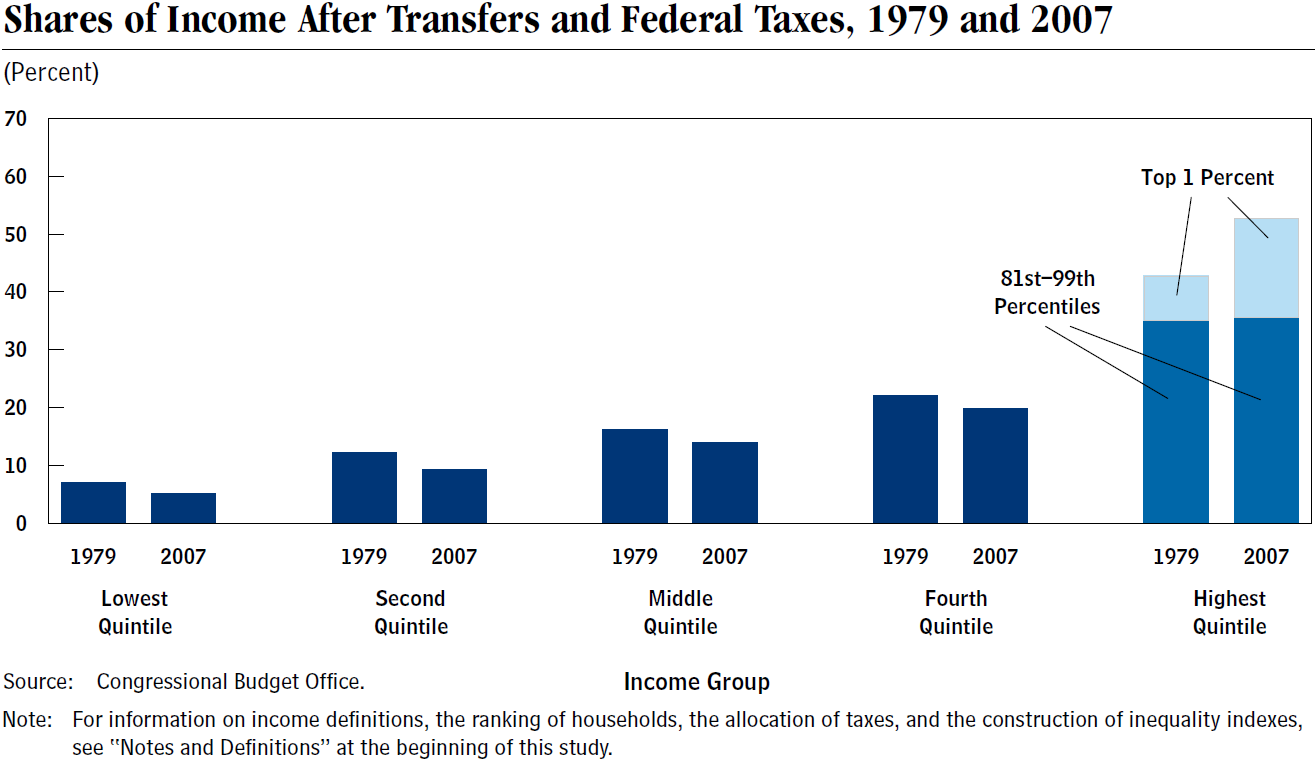
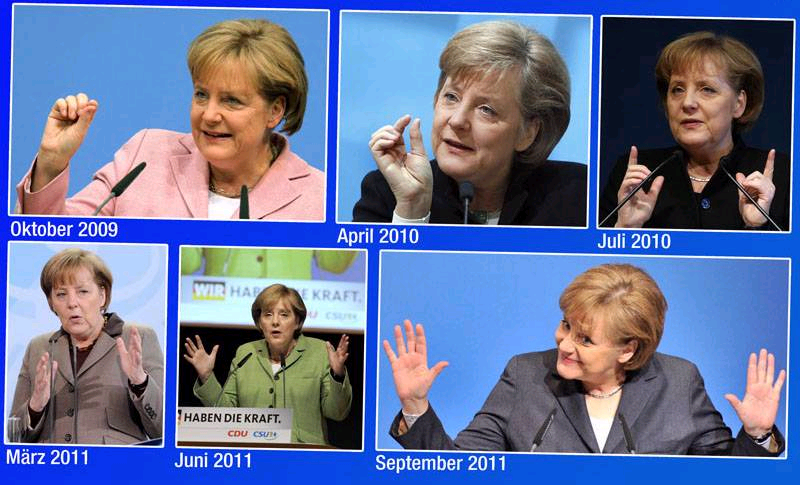
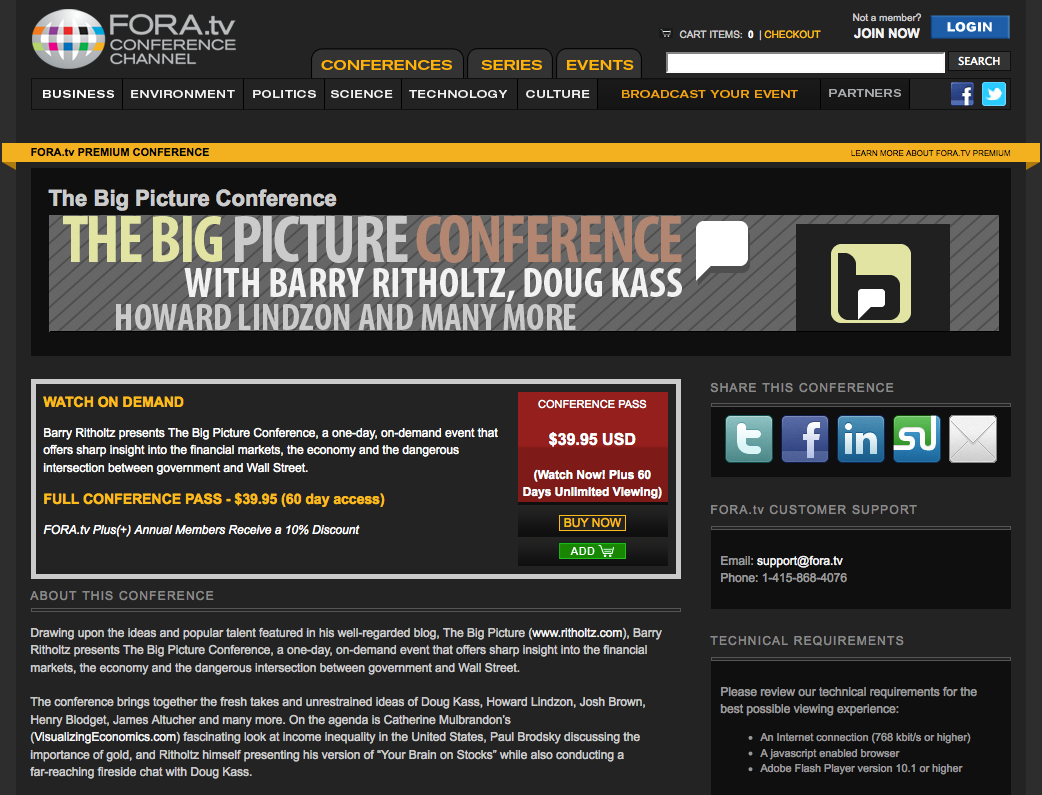

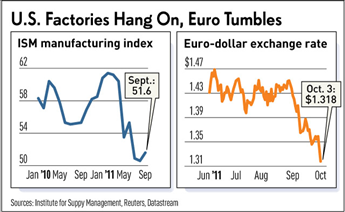
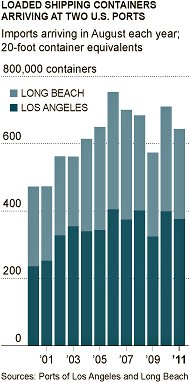

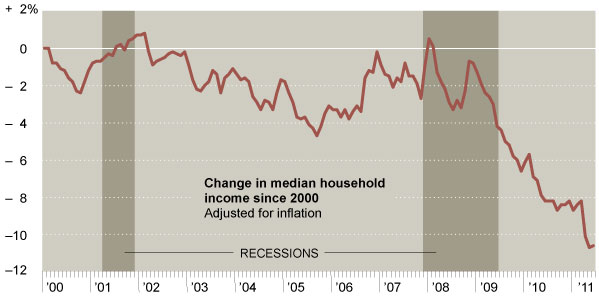
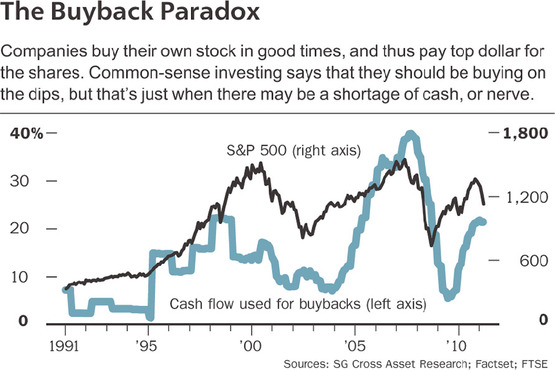
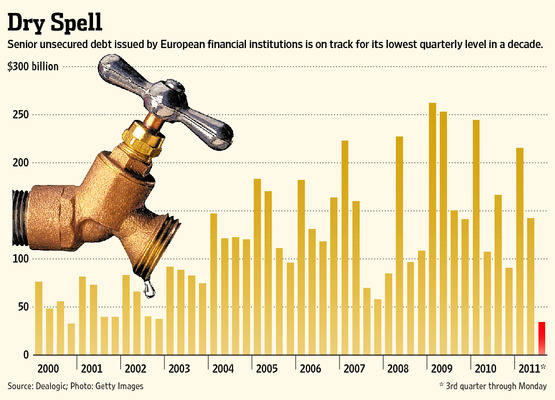

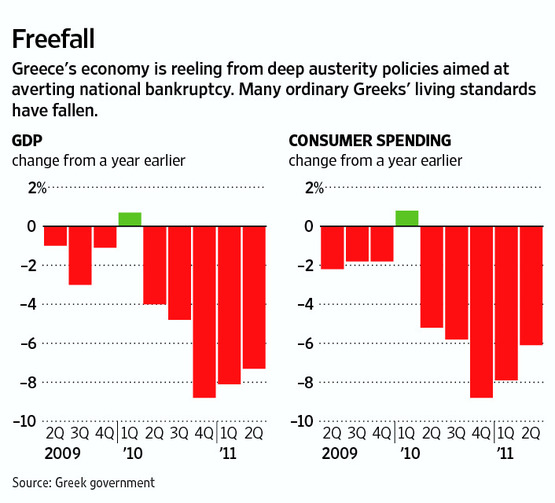
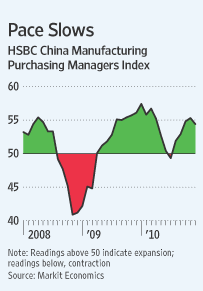



No comments:
Post a Comment